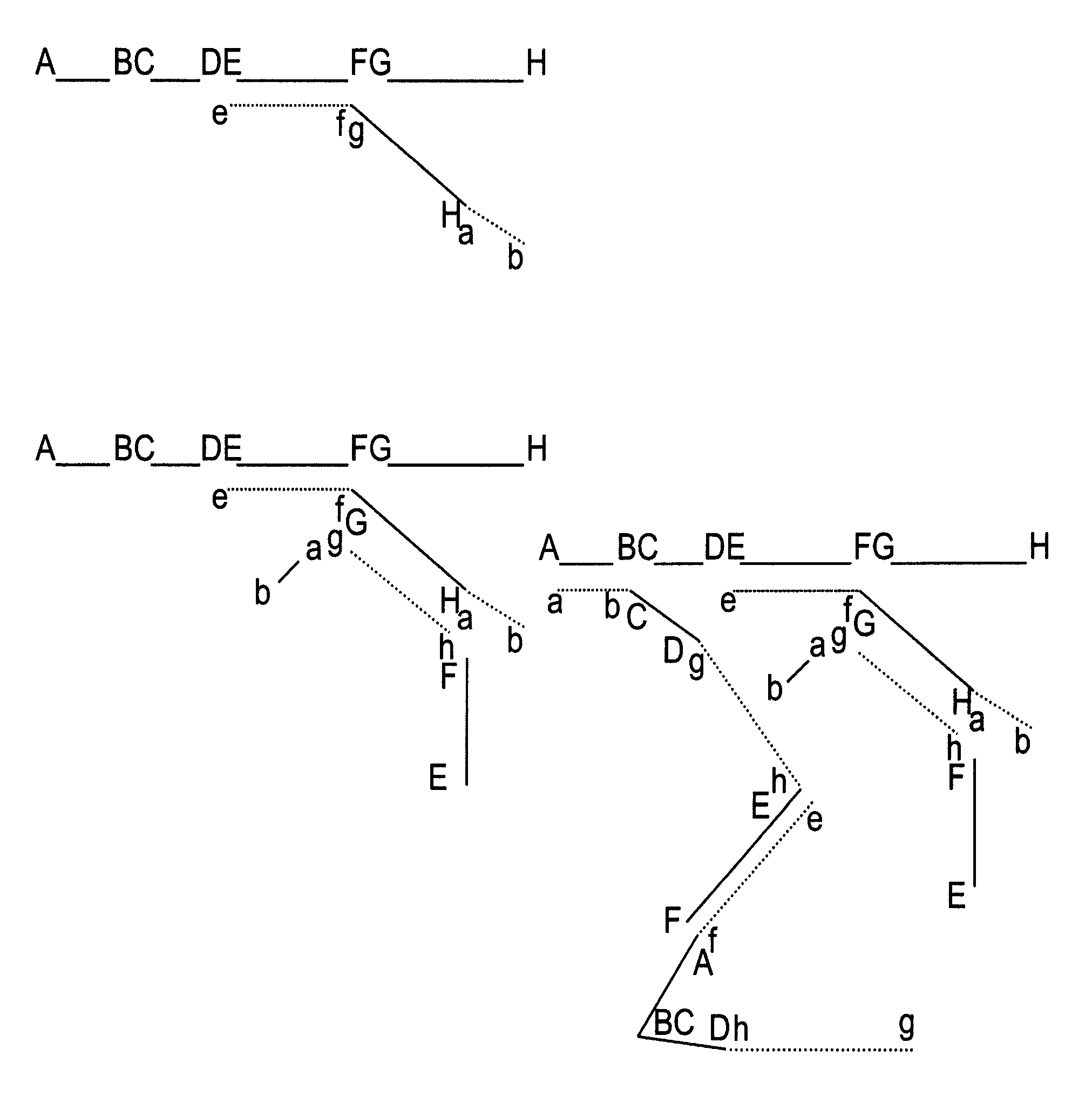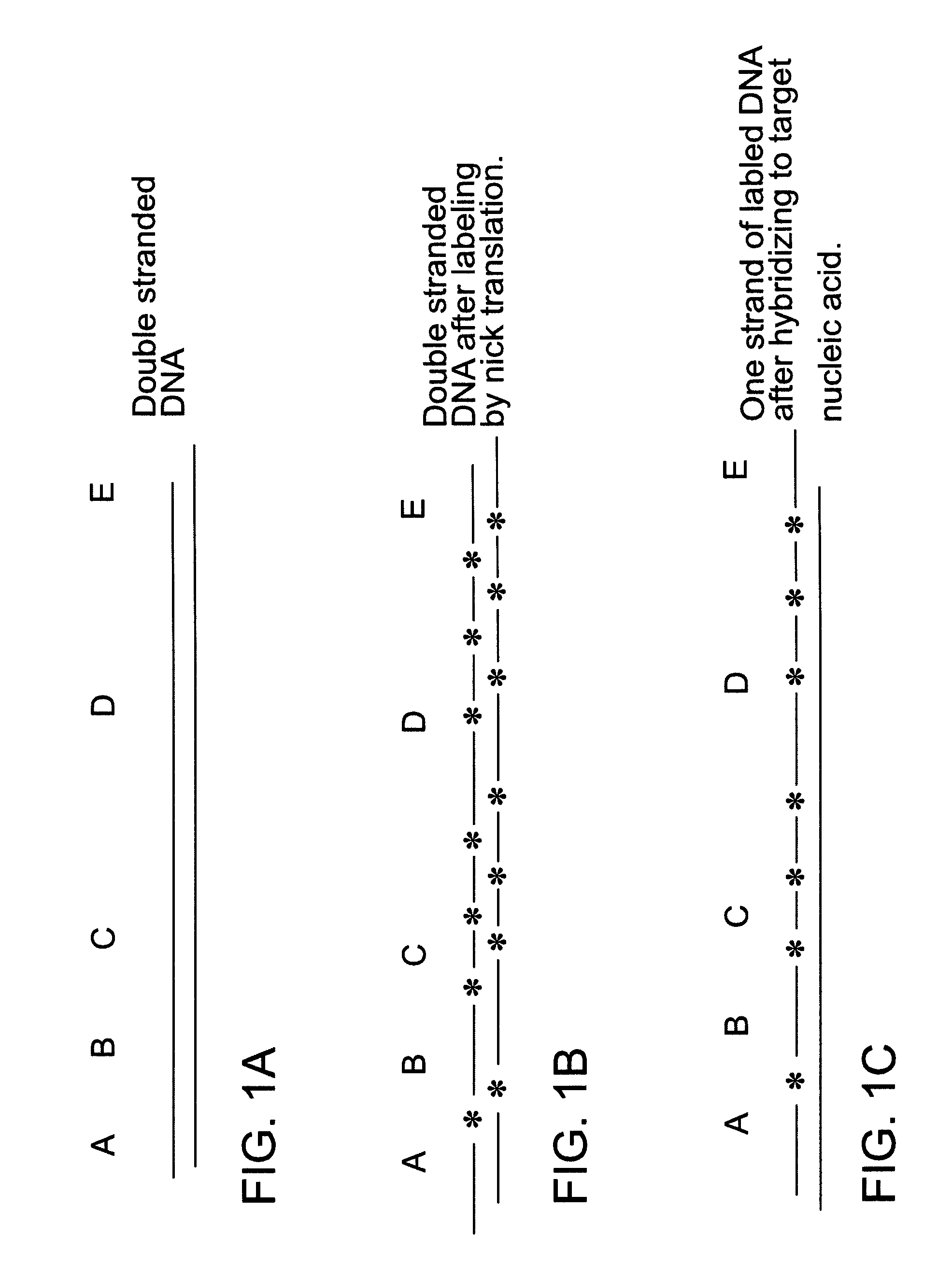Methods for producing nucleic acid hybridization probes that amplify hybridization signal by promoting network formation
a nucleic acid hybridization and network formation technology, applied in the field of nucleic acid hybridization probes that amplify the hybridization signal by promoting network formation, can solve the problems of chemical modification of nucleic acids, interference with the hybridization characteristics of probes, and limited signal-generating moiety incorporation into probe molecules without inhibiting assay performance, etc., to achieve the effect of increasing the complex size and signal strength
- Summary
- Abstract
- Description
- Claims
- Application Information
AI Technical Summary
Benefits of technology
Problems solved by technology
Method used
Image
Examples
Embodiment Construction
[0028]This invention concerns methods for improving hybridization assays by modifying probe nucleic acid so as to promote network formation during hybridization. The probe can be modified in various ways and the labeling of probe can be done by various methods. Hybridization assays can be done in various ways to take advantage of the probe modifications.
Probe Modification Methods
[0029]1. Consider an available probe composed of double stranded DNA containing a sequence corresponding to a specific target nucleic acid. A simple way to fragment this DNA is by digestion with a restriction endonuclease. If the resulting mixture of digestion products is then ligated together using T4 DNA ligase the results is a variety of double stranded DNA products each composed of a permuted combination of fragments from the digest. A given product may contain any or all or some of the fragments from the digest. A given fragment may be absent or present once or present in more than one copy. A fragment ...
PUM
 Login to View More
Login to View More Abstract
Description
Claims
Application Information
 Login to View More
Login to View More - R&D
- Intellectual Property
- Life Sciences
- Materials
- Tech Scout
- Unparalleled Data Quality
- Higher Quality Content
- 60% Fewer Hallucinations
Browse by: Latest US Patents, China's latest patents, Technical Efficacy Thesaurus, Application Domain, Technology Topic, Popular Technical Reports.
© 2025 PatSnap. All rights reserved.Legal|Privacy policy|Modern Slavery Act Transparency Statement|Sitemap|About US| Contact US: help@patsnap.com



